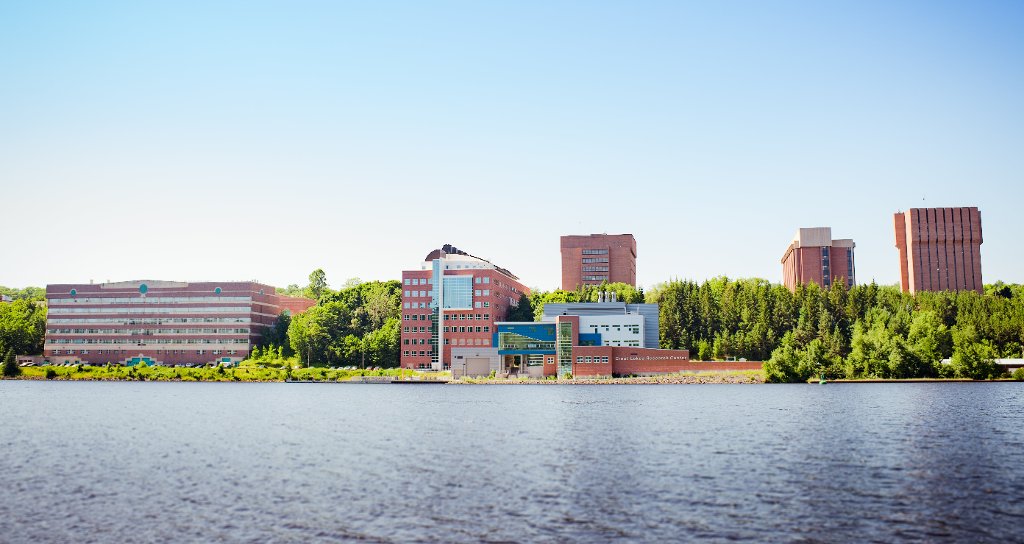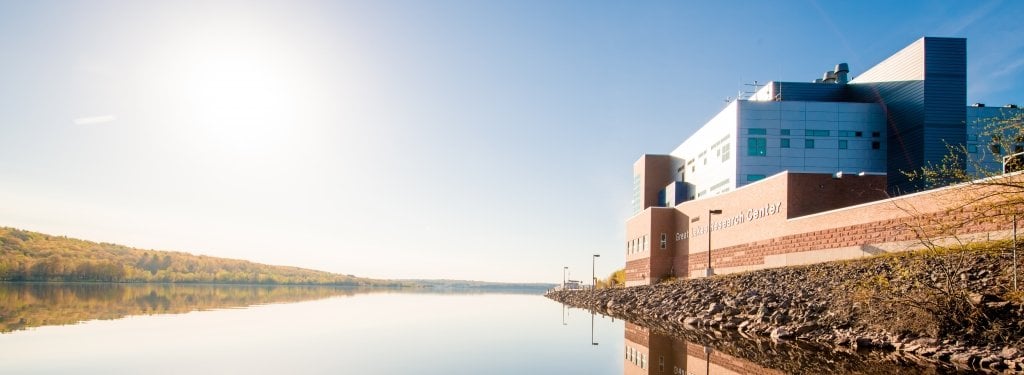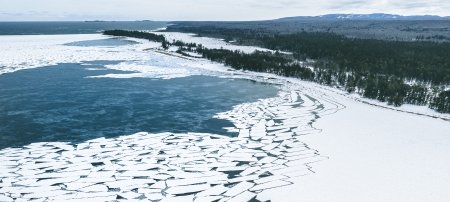The Michigan Pipeline Safety Advisory Board unanimously recommends Michigan Technological University to organize and lead state universities in an independent risk analysis of the Line 5 Straits Pipelines.
The Michigan Pipeline Safety Advisory Board (PSAB) voted unanimously today to recommend Michigan Tech be placed at the helm of a risk analysis of the Straits pipelines, two parallel 20-inch pipelines that form the 4.5-mile section of Line 5 that runs beneath the Straits of Mackinac. If the State agrees with the recommendation, Michigan Tech would collaborate with other state universities to analyze the environmental and economic impacts of a “worst-case scenario” spill or release.
“Michigan’s universities would be working together to provide the data,” says Guy Meadows, director of Michigan Tech’s Great Lakes Research Center. “Michigan Tech would lead the process because of our extensive knowledge of the Straits of Mackinac region and its complex flows, and would determine the best ways for the best people at Michigan’s universities to contribute.”
Preventing the Worst
On July 26, 2010, Michigan experienced the largest inland oil spill in U.S. history when a pipeline known as Line 6B burst and spilled heavy crude into a tributary of the Kalamazoo River. In the spill’s wake, national attention focused on oil transportation safety, including that of the Line 5 pipelines. Built in 1953 and currently owned by Canadian natural gas distributor Enbridge, Line 5 runs from Superior, Wisconsin, to Sarnia, Ontario, Canada.
In 2015, the Michigan Petroleum Pipeline Task Force, a multi-agency group established after the 2010 spill, issued a report that made 13 recommendations, including the establishment of the PSAB and the commissioning of two studies: a risk analysis and an alternatives analysis for the Straits pipelines portion of Line 5.
The alternatives analysis has been completed and a draft report was released for public comment on June 29, 2017. The risk analysis was halted three months ago, however, when the State terminated its contract with Dat Norske Veritas (DNV), the third-party contractor conducting the analysis, due to a conflict of interest.
When looking to replace DNV, Meadows says, the State wanted to find a group that understood the full picture. Meadows had been serving on the PSAB as the representative of state universities, but recused himself from voting when Michigan Tech’s name came up for consideration. If the State agrees with the recommendation, Meadows will resign from the board to lead the risk analysis process.
“Michigan taxpayers funded three-fourths of the Great Lakes Research Center for this very purpose,” says Meadows. “In this role, we would be fulfilling our promise to address complex problems facing the Great Lakes on a data-only basis and to make recommendations to decision makers based on a complete picture.”
Examining the Data
In conducting the risk analysis, Michigan Tech and the state universities would be tasked with analyzing:
- The environmental fate and transport of oil or other products released from the Straits pipelines in a worst-case scenario,
- How long it would take to contain and clean up the worst-case release,
- The short- and long-term public health and safety impacts,
- The short- and long-term ecological impacts, and
- Potential measures to restore the affected natural resources and mitigate the ecological impacts.
The group would also estimate the amount of natural resource damages that would result from a worst-case release, the governmental costs that would be incurred as a result of a worst-case release, and all other economic damages – public and private – that would result from a worst-case release.
While conducting the analysis, Michigan Tech and their university partners would prepare a draft report and hold at least one public information presentation on the draft analysis. The team would then consider and respond to comments on the draft report before preparing the final report.
“The Pipeline Safety Advisory Board recommended Michigan Tech because the people of Michigan need a data-driven solution,” says Glenn Mroz, president of Michigan Technological University. “That's what scientists and engineers do. We ask questions, gather the evidence and analyze the data to understand the big picture.”
Michigan Tech and the other universities would be under contract to the State of Michigan, not to Enbridge. Enbridge would pay for the analysis, but would have no control over the analysis itself. When the final report has been issued, the State will require Enbridge to maintain an adequate financial assurance mechanism to cover liability for all damages or losses to public and private property in the event of a worst-case scenario. The State has the authority to do so under the 1953 easement that granted permission for the pipelines’ construction.
“Michigan Technological University’s enabling legislation calls on the University to provide the means for Michigan residents to acquire knowledge that will contribute to industry,” Meadows says. “By conducting this analysis, we’d be getting to the heart of what Michigan Tech was created to do.”
Next Steps
Michigan Tech and partners, once under contract, would have six months in which to complete the independent risk analysis and would seek comments from the public at designated check-in dates. These dates, as well as the process by which state universities can submit proposals for participation and names of experts in specific areas within the State's published scope of work for the risk analysis, will be decided upon and publicized in the near future when Michigan Tech’s role is finalized.
Michigan Technological University is an R1 public research university founded in 1885 in Houghton, and is home to nearly 7,500 students from more than 60 countries around the world. Consistently ranked among the best universities in the country for return on investment, Michigan's flagship technological university offers more than 120 undergraduate and graduate degree programs in science and technology, engineering, computing, forestry, business, health professions, humanities, mathematics, social sciences, and the arts. The rural campus is situated just miles from Lake Superior in Michigan's Upper Peninsula, offering year-round opportunities for outdoor adventure.







Comments